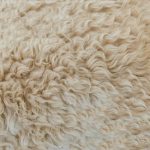When temperatures rise, choosing the right fabric can make all the difference, especially if you have sensitive skin. You want something that’s breathable, gentle, and unlikely to cause irritation. Natural fibers often fit the bill, but not all are created equal when it comes to comfort and hypoallergenic properties. Understanding which materials perform best in hot weather can help you stay cool without compromising your skin’s health. Let’s explore some top options you might consider.
Table of Contents
Key Takeaways
- Natural fibers like cotton, bamboo, linen, and hemp offer breathability and hypoallergenic benefits ideal for hot weather clothing.
- Cotton is soft, breathable, resists allergens, and supports skin health, especially when 100% pure.
- Bamboo fabric provides durability, natural hypoallergenic properties, and comfort suitable for sensitive skin in heat.
- Linen and hemp excel in moisture-wicking and ventilation, reducing irritation and overheating during hot weather.
- Silk and modal combine softness, breathability, and hypoallergenic qualities, balancing comfort and style for warm climates.
Benefits of Natural Fibers in Hot Weather
Although synthetic fabrics are popular, natural fibers offer clear benefits for hot weather clothing. When you choose natural fibers, you’re opting for materials that breathe better and keep you cooler.
These fibers allow air to circulate, which helps wick away sweat and moisture, reducing discomfort. Natural fibers like linen and hemp are especially good at regulating your body temperature in hot weather. They’re also less likely to irritate your skin, making them ideal if you have sensitivities.
Natural fibers like linen and hemp wick moisture and regulate temperature, keeping sensitive skin comfortable in the heat.
Plus, natural fibers tend to be more biodegradable and eco-friendly, so you’re making a sustainable choice. By wearing clothes made from natural fibers, you’ll stay comfortable and cool, even on the hottest days.
It’s a smart way to beat the heat while caring for your skin.
Cotton: A Breathable and Hypoallergenic Choice
When you pick cotton for your hot weather wardrobe, you’re choosing a fabric that keeps your skin comfortable and cool.
Cotton’s natural breathability allows air to circulate, reducing sweat buildup and helping you stay dry. Its softness levels vary, but even the coarser weaves feel gentle against sensitive skin. This makes cotton an excellent option if you’re prone to irritation or sensitive to common allergy triggers found in synthetic fabrics.
Plus, cotton resists dust mites and other allergens, minimizing the chance of flare-ups. You can wear cotton confidently, knowing it supports your skin’s health while providing comfort in the heat.
Just opt for 100% cotton to avoid hidden irritants and get the full hypoallergenic benefits this fabric offers.
Linen’s Cooling and Moisture-Wicking Properties
Since linen fibers allow air to flow freely, you’ll stay cooler even on the hottest days. This natural breathability is one of the key linen benefits, making it ideal for hot weather clothing.
Linen excels in moisture management by quickly absorbing sweat and releasing it into the air, keeping your skin dry and comfortable. Unlike synthetic fabrics that trap heat and moisture, linen’s open weave promotes ventilation, preventing overheating.
When you wear linen, you get a fabric that not only feels fresh but also supports your skin’s health by reducing irritation caused by trapped moisture. Its durability and hypoallergenic nature add to its appeal, ensuring you stay comfortable, cool, and rash-free all summer long.
Choosing linen means you’re opting for smart, breathable comfort in the heat.
Hemp Fabric for Sensitive Skin and Sustainability
Linen’s natural breathability sets a high standard for hot weather fabrics, but hemp offers its own unique advantages, especially if you have sensitive skin.
Hemp fabric is naturally hypoallergenic and gentle, reducing irritation and making it ideal for those prone to skin reactions. It’s also highly breathable and moisture-wicking, keeping you cool and comfortable in the heat.
Beyond comfort, hemp sustainability makes it an eco-friendly choice. It requires minimal water, grows quickly without pesticides, and enriches the soil, making it better for the environment than many other fabrics.
When you choose hemp, you’re not only protecting your sensitive skin but also supporting a sustainable future.
Hemp fabric is a smart, responsible option for hot weather clothing that cares for you and the planet.
Silk’s Versatility and Comfort in Warm Climates
You’ll appreciate how silk’s breathability keeps you cool and manages sweat effectively in warm weather.
Its versatility lets you style it for both casual and formal occasions without sacrificing comfort.
Plus, with proper care, your silk garments can last for years, making them a smart investment.
Breathability and Sweat Management
While many fabrics struggle to keep you cool in hot weather, silk stands out for its exceptional breathability and sweat management. Its natural moisture absorption helps wick sweat away from your skin, while air circulation keeps you feeling fresh and dry. This unique combination makes silk ideal for hot climates, ensuring comfort without irritation.
| Feature | Benefit | Result |
|---|---|---|
| Moisture Absorption | Draws sweat from skin | Keeps you dry |
| Air Circulation | Allows airflow through fibers | Prevents overheating |
| Lightweight | Feels barely there | Enhances comfort |
| Hypoallergenic | Reduces skin irritation | Suitable for sensitive skin |
| Natural Fiber | Biodegradable and sustainable | Eco-friendly choice |
Silk’s breathability and sweat management make it perfect for staying comfortable in warm weather.
Styling Options and Uses
Because silk combines comfort with breathability, it adapts easily to various styles and occasions in warm climates. You can rely on silk for versatile outfit ideas that keep you cool yet stylish.
Here are some styling tips to make the most of silk in hot weather:
- Opt for loose-fitting silk blouses paired with linen shorts for a casual, airy look.
- Choose silk slip dresses for elegant evening events that demand both comfort and sophistication.
- Layer lightweight silk scarves to add a splash of color without trapping heat.
These options show how silk’s natural sheen and smooth texture elevate your wardrobe while helping you stay comfortable.
Use these styling tips to enjoy silk’s hypoallergenic benefits without sacrificing style.
Silk Care and Longevity
Even though silk feels delicate, caring for it properly guarantees your garments stay beautiful and comfortable for years.
To maintain silk’s natural sheen and softness, always follow silk maintenance guidelines like hand-washing in cold water with mild detergent or using a gentle cycle in your machine inside a mesh bag.
Avoid harsh chemicals and direct sunlight, which can weaken the fibers and reduce silk durability.
When drying, lay your silk pieces flat on a towel to air dry, steering clear of wringing or twisting.
Proper storage, like hanging or folding silk in a breathable fabric bag, also prevents damage.
Comparing Durability and Comfort of Hypoallergenic Fabrics
You’ll want to compare the strength of different hypoallergenic fabrics to see which hold up best over time.
Comfort in hot weather is key, so pay attention to how each fabric feels against your skin when it’s warm.
Finally, consider how long each fabric lasts with regular wear to find the best balance between durability and comfort.
Fabric Strength Comparison
When choosing hypoallergenic fabrics for hot weather, you want materials that balance durability with comfort.
Fabric durability is key to guarantee your clothing lasts through frequent wear and washing without losing shape or softness.
Here’s a quick strength comparison to guide your choice:
- Cotton – Offers moderate fabric durability; it’s strong but can wear thin over time.
- Linen – Known for excellent strength and breathability; it resists tearing yet softens with use.
- Bamboo – Combines decent strength with natural hypoallergenic properties but may be less durable than linen.
Comfort in Hot Weather
Although durability is important, comfort plays an equally essential role when selecting hypoallergenic fabrics for hot weather. You want fabrics that feel gentle on your summer skin, preventing irritation and allowing your body to breathe.
Lightweight layering is key; fabrics like bamboo and linen offer excellent breathability without weighing you down. Cotton is also a great choice, as it’s soft and absorbs moisture well, keeping you cool and comfortable.
Avoid synthetic materials that trap heat and cause sweating, which can aggravate sensitive skin. When you prioritize comfort alongside durability, you guarantee your clothing supports your skin’s health while handling the challenges of hot weather.
This balance lets you enjoy the season without sacrificing ease or protection.
Longevity and Wear
Finding fabrics that balance comfort with durability can be a challenge, especially for hot weather clothing.
When choosing hypoallergenic fabrics, you want materials that offer both wear resistance and easy fabric maintenance to keep your clothes looking fresh and lasting longer.
Consider these factors:
- Cotton – Offers good breathability and wear resistance but requires regular washing to maintain softness and prevent allergens.
- Bamboo – Known for its durability and natural hypoallergenic properties; it needs gentle fabric maintenance to avoid damage.
- Modal – Combines softness with strong wear resistance, making it a reliable choice for hot weather clothing with minimal upkeep.
Frequently Asked Questions
How Should I Wash Hypoallergenic Fabrics to Maintain Their Properties?
You should use gentle washing techniques, like cold water and mild detergent, to maintain fabric care. Avoid harsh chemicals and high heat drying, since they can damage fibers and reduce the hypoallergenic properties your fabrics have.
Are There Any Hypoallergenic Fabric Blends Suitable for Hot Weather?
You’ll find fabric combinations like cotton-linen or bamboo-cotton summer blends that’re hypoallergenic and breathable. These blends keep you cool and comfy while minimizing irritation, making them perfect choices for hot weather wear.
Can Hypoallergenic Fabrics Prevent Heat Rash in Children?
You can help with heat rash prevention by choosing hypoallergenic fabrics, as they reduce irritation caused by children’s sensitivity. These fabrics keep skin breathable and dry, minimizing rash risks during hot weather activities.
What Are the Best Colors for Hot Weather Hypoallergenic Clothing?
Colors for hot weather hypoallergenic clothing work like a gentle breeze, cooling you down. You’ll want to choose light hues like white or pastels, as color psychology and seasonal trends emphasize their calming, heat-reflecting effects.
Do Natural Hypoallergenic Fabrics Require Special Storage to Stay Fresh?
You don’t need special storage techniques for natural hypoallergenic fabrics, but you should practice proper fabric care. Keep them in a cool, dry place and avoid plastic bags to help them stay fresh and breathable.
- Effortless Elegance: Your Guide to Styling Khadi Suits and Salwar Kameez - June 24, 2025
- Layer in Style: The Best Khadi Jackets for Men and Women - June 24, 2025
- A Style Guide to Finding the Perfect Khadi Kurta for Women - June 24, 2025







